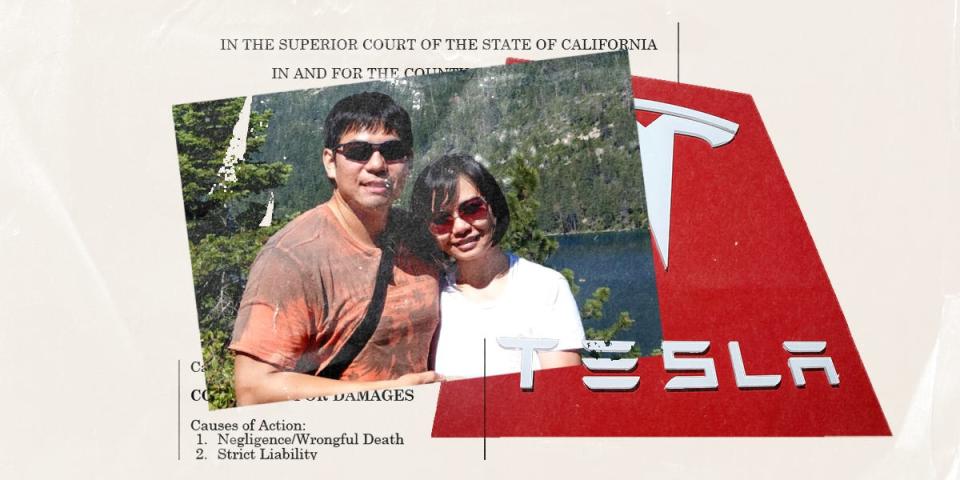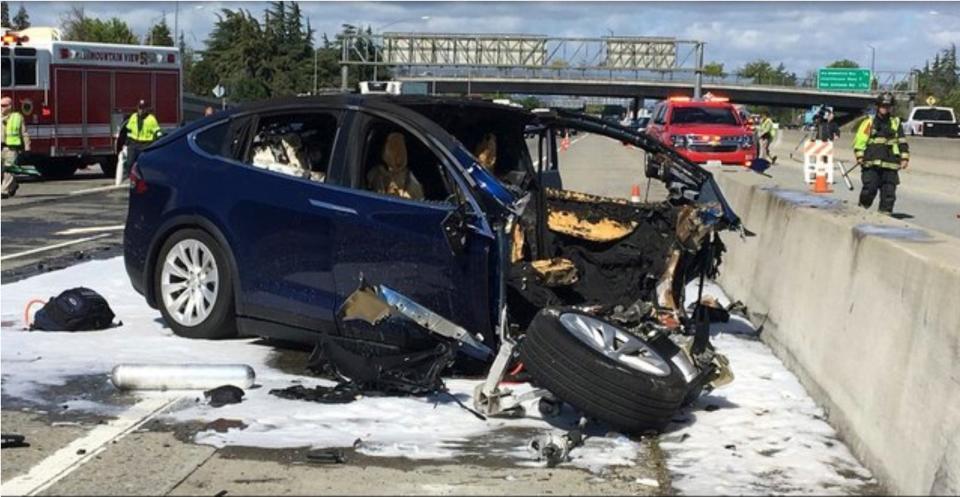Tesla is headed to trial over deadly 2018 Autopilot crash

Tesla is going to trial over a wrongful-death lawsuit brought by the family of Walter Huang.
The family alleges that flaws in Tesla's Autopilot system caused the 2018 crash that killed Huang.
Tesla could face financial repercussions if a jury finds it was at fault for the collision.
Walter Huang, an Apple engineer, was killed in a fiery wreck more than six years ago when his Tesla Model X SUV smashed into a concrete barrier on a California highway as the vehicle was in Autopilot mode.
Huang's family filed a wrongful-death lawsuit against Tesla in the aftermath of the crash — and now they're headed to a civil trial that could cast a negative spotlight on Elon Musk's electric-car company if a jury finds it liable for the collision.
The trial is set to kick off Monday in California's Santa Clara County Superior Court.
Bryant Walker Smith, a University of South Carolina law professor who's an expert in automotive technologies, told Business Insider that the case probably wouldn't have any real consequences for Tesla, but if it were to lose, it would almost certainly "bolster regulatory scrutiny" around its Autopilot driver-assist software.
"This is one case, and Tesla will be able to absorb whatever final damages it ends up with, if any," Smith said of the scenario in which Tesla loses.
A significant jury award could, however, be attention-grabbing.
"It would grab the attention of other lawyers and even other people who've said, 'Hey, my vehicle did something it shouldn't have,' or 'This was wrong,' or 'I was injured,' and so it could in that way reshape or reinforce the public conversation," Smith said.
The lawsuit against Tesla alleges that its Autopilot system caused deadly 2018 crash
Huang's family alleged in the 2019 lawsuit, which also names the state of California as a defendant, that the Tesla Model X was "defective in its design" and that flaws with Tesla's Autopilot driver-assist software caused the deadly crash on the morning of March 23, 2018.
The family said in the lawsuit that Huang was traveling along US Highway 101 in Mountain View and, as his car approached a left exit ramp, "the autopilot feature of the Tesla turned the vehicle left, out of the designated travel lane, and drove it straight into a concrete highway median" at a speed of about 70 miles per hour.
B. Mark Fong, an attorney representing Huang's family, said in a statement at the time the lawsuit was filed that the married 38-year-old father of two died because Tesla was "beta testing its Autopilot software on live drivers."

The NTSB found that Tesla's Autopilot system and Huang probably both played a role in the crash
An investigation by the National Transportation Safety Board determined that Tesla's Autopilot system and Huang's inattention behind the wheel were most likely responsible for the crash.
The NTSB said in a report that the probable cause of the crash was the Autopilot system "steering the sport utility vehicle into a highway gore area due to system limitations, and the driver's lack of response due to distraction likely from a cell phone game application and overreliance on the Autopilot partial driving automation system."
The federal safety agency described Huang in its report as an avid gamer and game developer who regularly played games on his phone.
A review of data from Huang's iPhone showed that a game app was active on his cellphone during the drive, but it couldn't be determined whether he was holding his phone in the seconds before the crash, according to the NTSB's report.
Huang's hands were not detected on the steering wheel in the moments before the wreck and he "made no evasive steering or braking input before the crash," the NTSB said.
Additionally, the NTSB said in its report that Huang "most likely would have survived the collision" if the already-damaged crash attenuator — the barrier that the car slammed into — had been repaired in a "timely manner." The safety barrier was damaged in a prior collision.

 Yahoo Autos
Yahoo Autos 